Introduction: In this article – part of an ongoing “Introduction to Genealogy” series – Gena Philibert-Ortega gives tips for identifying photos that aren’t labeled, using reverse image searching. Gena is a genealogist and author of the book “From the Family Kitchen.”
Most likely you know how to use online search engines. You probably use a search engine to find everything from where the nearest bookstore is to information about your ancestors. But what about a reverse image search? Have you done that kind of Internet search? A reverse image search can benefit your genealogy research, and is an important technique you should learn.
First, what is a reverse image search? Most online searches are conducted by typing a word or several words. You may have also searched the Internet by speaking into your phone or computer microphone. Apple’s Siri is one example of searching by voice. A reverse image search allows you to search by using an image. The search engine then looks for the same image or a similar one on the Internet.
How can a reverse image search help family historians? This type of search allows you to:
- Search using an ancestral photo to find potential living cousins
- Search using an unidentified ancestral photo to see if anyone has identified it
- Search using a photo of an unknown place to help identify it
- Search using an heirloom to identify that item
- Search using a photo you have taken to see if anyone is using that photo
- Search using a photo of you to see if it appears on other websites
- Search using a photo found on a website for other instances of that photo
One way I have used a reverse image search is when researchers have shown me a photo of a building, monument, or a large fountain, and they aren’t sure where it was taken. Haven’t you come across photos of family posing in front of a tourist site or a foreign locale on vacation and wondered, “where is that?” I’ve used a reverse image search to see if I can find where that place is. But there are other uses, and conducting a reverse image search is one way you can help identify photos and find living relatives.
A Few Examples: Google Image Search
Let’s look at two examples of a reverse image search using the search engine Google Images.
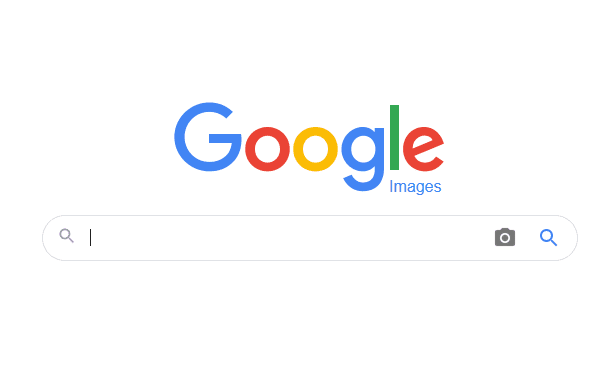
The Google Images search engine allows you to conduct three types of searches. You can do what is familiar and type your search term/s. A microphone icon allows you to use your voice and say what you want Google to search for. The third way to search is by clicking on the camera icon.
If you click on the camera icon, you can “search by image.” Google allows you to do this by either pasting an image’s URL (a website address for a photo you found on the Internet) into the box, or by uploading an image from your computer. Pasting a photo URL can be useful if you find an ancestral photo online and you want to find other instances of that photo on the Internet, thus potentially helping you find more information about your ancestor.

Let’s say that you have a photograph you inherited from your family and it’s of a place. You’re not sure what that place is. You can upload that image from your computer in the Google Images search engine, and Google will search the Internet for images that are similar.
In this example, I uploaded a photograph I took at Disneyland’s California Adventure in 2003.
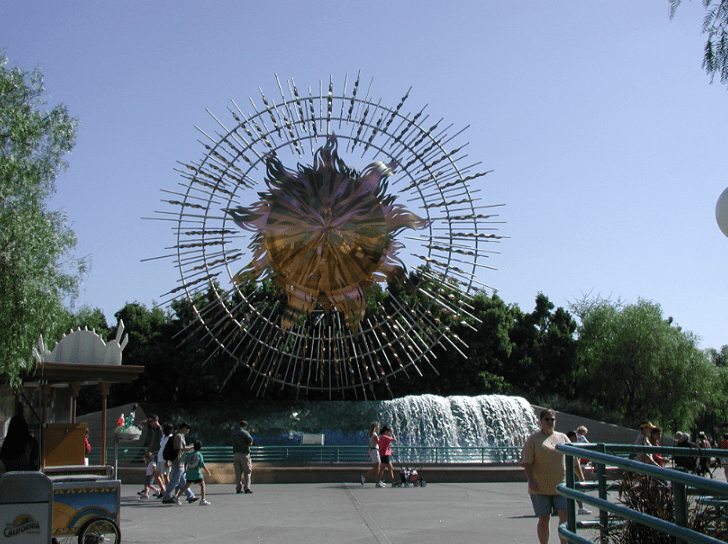
My results show me similar photos and also provide some information about that place.
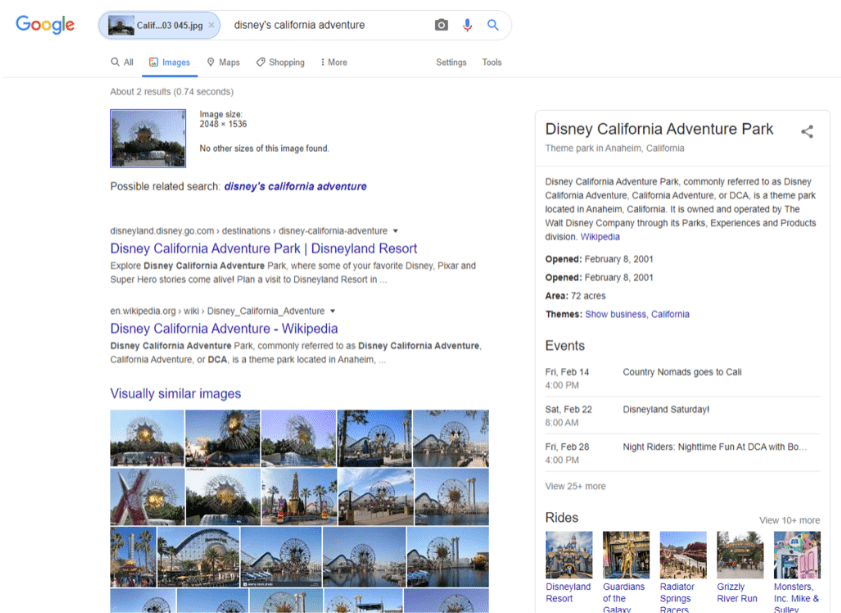
Another reason to use a reverse image search is to find other people using photos of your ancestors. This can be helpful in finding unknown-to-you cousins. I uploaded a photo of one of my maternal ancestral couples, Mary Ann Smith McNeil and John C. McNeil, into Google Images.

Now look at the results. The top results are not them. Google has tried to guess and it is way off. It even included a search term that is not something I typed, nor is it found on the name of the image file (“Mary Ann Cotton’s Husband” which does include some words on the image file but not all).
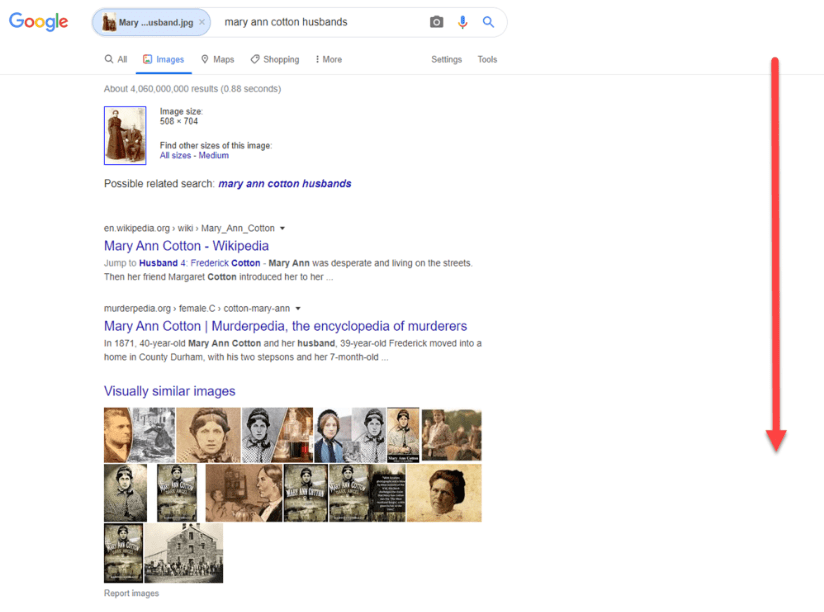
However, when I scroll down, I do get results for the exact match of the photo I uploaded. Lesson here? Make sure to carefully analyze results, including scrolling down the results page, so that you can see everything Google has found.
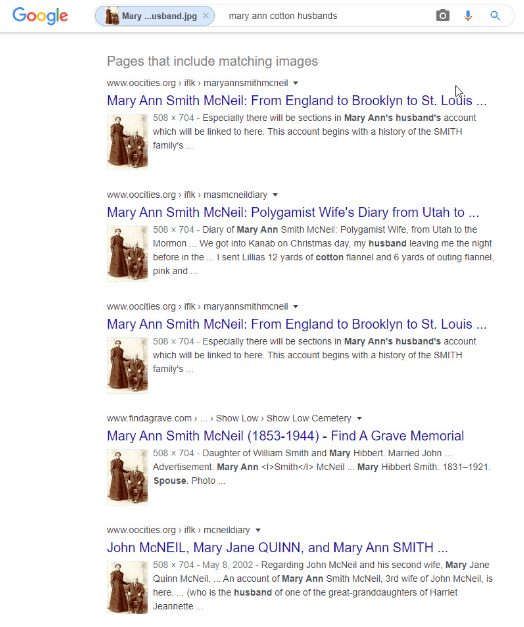
Now consider this. I have added the photo of my maternal ancestors to this article. Someone who is also related could one day do a reverse image search and find this article. They will see that photograph of Mary Ann Smith McNeil and John C. McNeil and realize that I am a descendant, and will know that they should contact me. When we post photos of our ancestors on our websites and blog pages, we make it easier for someone doing a reverse image search to find us, even if they have an unidentified photograph in their collection.
Now, is this type of search perfect? No, and obviously you’re not always going to find relevant results. However, the beauty of the Internet is that it’s constantly evolving – and as more content is added, your chances of finding a relevant result increase.
Learning More about Reverse Image Searches
To learn more about doing a reverse image search on Google Images, see their Help web page. Another website that conducts reverse image searches is Tin Eye. The benefit of Tin Eye is that it has an alert feature that will send you an email alert every time they find your image.
Now is a great time to be involved in genealogical research, and the ability to do a reverse image search is one reason!
Related Articles:

How do I get the image downloaded? Is it copy and paste or snip?
Suzanne, which image? The one of Mary Ann Smith McNeil? You can right click your mouse on the image and that will allow you to save it to your computer.
Thanks, Gena, for a great article! Have shared it with my family organization!
Thanks Eve! I appreciate it–Gena
At a flea market recently, I picked up a very nice photo album (6″ x 5″) of people who ARE identified (c. late 1880s to maybe early 1900s -– just guessing). Possibly lived in New New York -– at least the album was published in New York. Is there a genealogy website where I could upload some of the photos and names so a descendant could claim the album?
How wonderful Janet! Yes, there are two you might want to consider. One is DeadFred.com and the other is Ancient Faces (https://www.ancientfaces.com/). Both allow you to upload images.
Also, familysearch.org Since you know the names, you would have to find the tree they belong to and upload it to their memories. What a blessing for those longing to find a photo of their ancestors.
I was so excited when I read your article. I could not wait to try it. However, I have not found success. I tried the microphone search and it came up with the microphone but would not do anything when I told it to search. On the photo, I uploaded several different ancestral photos and it just came up with we cannot find any other sizes. Then it gave me a group of unrelated photos and then, scrolling down, it gave me things like addresses that had vintage clothing, or other totally unrelated items. So now, I am disappointed and do not know what to do next.
Linda, don’t use the microphone, try just typing in your search in the search box, just as you would with any Google search.
Regarding the reverse image search, it’s possible there aren’t any matches right now for your photos. However, that can change as more content is added to the website. In some cases, I also don’t receive a perfect match and instead receive results that aren’t quite right. That’s to be expected since there might not be anyone who has uploaded that photo to the Internet.
Good thoughts. Thanks.
Thank you Paula for your comment.–Gena